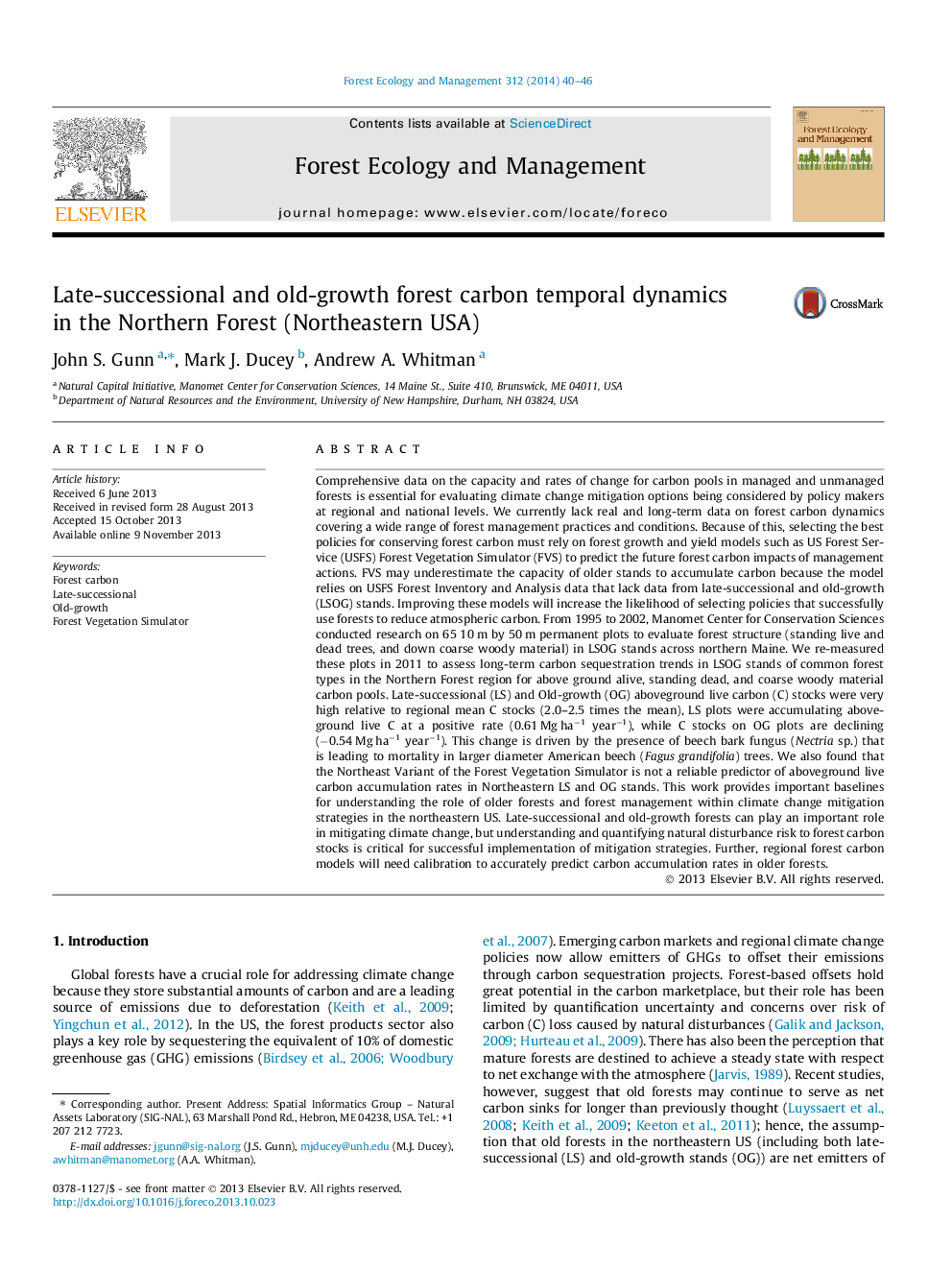| کد مقاله | کد نشریه | سال انتشار | مقاله انگلیسی | نسخه تمام متن |
|---|---|---|---|---|
| 86771 | 159211 | 2014 | 7 صفحه PDF | دانلود رایگان |
• We re-measured old forest plots to assess carbon dynamics over >10-year period.
• Late-successional (LS) live carbon stocks are high relative to regional mean.
• Old-growth (OG) live carbon stocks are high relative to regional mean.
• LS plots accumulated carbon at a positive rate and OG carbon declined.
• Forest Vegetation Simulator is not a reliable predictor of carbon in old forests.
Comprehensive data on the capacity and rates of change for carbon pools in managed and unmanaged forests is essential for evaluating climate change mitigation options being considered by policy makers at regional and national levels. We currently lack real and long-term data on forest carbon dynamics covering a wide range of forest management practices and conditions. Because of this, selecting the best policies for conserving forest carbon must rely on forest growth and yield models such as US Forest Service (USFS) Forest Vegetation Simulator (FVS) to predict the future forest carbon impacts of management actions. FVS may underestimate the capacity of older stands to accumulate carbon because the model relies on USFS Forest Inventory and Analysis data that lack data from late-successional and old-growth (LSOG) stands. Improving these models will increase the likelihood of selecting policies that successfully use forests to reduce atmospheric carbon. From 1995 to 2002, Manomet Center for Conservation Sciences conducted research on 65 10 m by 50 m permanent plots to evaluate forest structure (standing live and dead trees, and down coarse woody material) in LSOG stands across northern Maine. We re-measured these plots in 2011 to assess long-term carbon sequestration trends in LSOG stands of common forest types in the Northern Forest region for above ground alive, standing dead, and coarse woody material carbon pools. Late-successional (LS) and Old-growth (OG) aboveground live carbon (C) stocks were very high relative to regional mean C stocks (2.0–2.5 times the mean), LS plots were accumulating aboveground live C at a positive rate (0.61 Mg ha−1 year−1), while C stocks on OG plots are declining (−0.54 Mg ha−1 year−1). This change is driven by the presence of beech bark fungus (Nectria sp.) that is leading to mortality in larger diameter American beech (Fagus grandifolia) trees. We also found that the Northeast Variant of the Forest Vegetation Simulator is not a reliable predictor of aboveground live carbon accumulation rates in Northeastern LS and OG stands. This work provides important baselines for understanding the role of older forests and forest management within climate change mitigation strategies in the northeastern US. Late-successional and old-growth forests can play an important role in mitigating climate change, but understanding and quantifying natural disturbance risk to forest carbon stocks is critical for successful implementation of mitigation strategies. Further, regional forest carbon models will need calibration to accurately predict carbon accumulation rates in older forests.
Journal: Forest Ecology and Management - Volume 312, 15 January 2014, Pages 40–46
